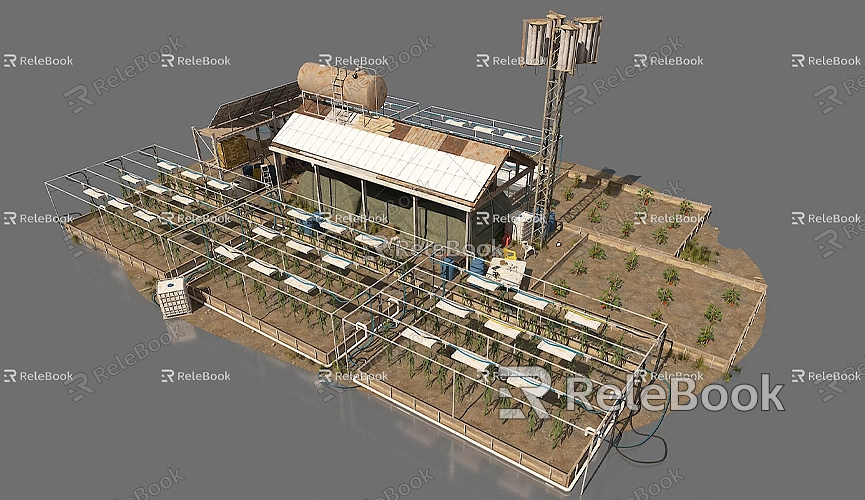How to export sketchup model at actual size
In the fields of architectural design, interior design, and various engineering disciplines, SketchUp is highly regarded for its intuitive modeling approach and robust capabilities. For designers, ensuring the accuracy of model dimensions is crucial, especially when exporting models to other software (like AutoCAD). Ensuring actual sizes can significantly enhance subsequent workflow efficiency and design quality. This article will detail how to export models from SketchUp at actual size and share some related tips to ensure the exported files meet professional standards.
Understanding Unit Settings in SketchUp
Before exporting a model, it is essential to ensure that the unit settings in SketchUp align with project requirements. SketchUp allows users to select from various units, including inches, millimeters, and feet. Before starting any modeling, access the Model Info panel, choose the units, and set them according to the project's specific needs. It is important to maintain consistency in the selected units throughout the project to avoid unit mismatches during export.

The accuracy of unit settings is critical to the export process. If set incorrectly, it can lead to distorted dimensions when the model is imported into other software. Therefore, it is advisable to maintain unit consistency throughout the modeling process, which not only aids in export but also improves overall workflow efficiency.
Preparing the Model for Accurate Dimensions
Ensuring that the model is complete and well-organized is a vital step before exporting. Check each part of the model to ensure that there are no extraneous elements. For example, remove unnecessary groups or components and consolidate similar elements. Using layers to categorize different parts of the model can also facilitate better management, especially when specific parts need to be selected during export, significantly simplifying the workflow.
In addition to organizing the model, it is advisable to conduct a comprehensive inspection before export. This can include using SketchUp's built-in inspection tools to ensure there are no unconnected edges, overlapping faces, or potential geometric errors. These details can affect the final output after export, so timely corrections are necessary.
The Specific Process for Exporting Models
Once the model is prepared, the next step is to export it. In SketchUp, find the "File" option in the top menu, select "Export," and then click on "3D Model." In the export dialog that appears, you will need to choose the file format for export; common formats include DWG and DXF, which are best suited for compatibility with software like AutoCAD.
The export settings interface typically includes an option button that leads to more detailed export parameters. Here, you can select the export units that match the model units. For example, if the model is built in millimeters, you should also select millimeters for export. Additionally, ensure that you select the appropriate file type to enhance interaction with other software.
After completing the settings, choose a save path for the file and name it. The export process is generally quick, but complex models may take a bit longer.
Validating the Import in Other Software
After exporting, open AutoCAD or another software to validate the imported model. When opening the file, ensure that the import settings match those in SketchUp, paying special attention to unit and scale compatibility to ensure that the model displays as expected after import.
In AutoCAD, you can use measurement tools to check the model's dimensions, confirming that they match those in SketchUp. If you find any discrepancies, you can return to SketchUp to make the necessary adjustments to ensure that the final output meets design standards.
Common Issues and Solutions
During the export process, designers may encounter some common issues. The most frequent issue is that the exported model displays incorrect proportions in other software. This is usually caused by a mismatch between the units selected during export and the model's original units. Therefore, it is vital to double-check unit settings before exporting.

Another situation may arise where certain details of the model are missing or displayed incompletely after import. This can occur if some elements in SketchUp were not properly recognized or exported. In such cases, it is recommended to conduct a thorough check of the model's integrity before exporting to ensure that all important components are included.
Additionally, for users who are less familiar with SketchUp or AutoCAD, consulting online tutorials or participating in forum discussions can help them quickly grasp operational techniques. These resources provide valuable information that can assist users in resolving various issues encountered during the process.
Optimizing Workflow After Export
Once the export is completed and the model is validated in other software, designers can consider further optimizing their subsequent workflow. For example, utilizing AutoCAD's various drawing and editing features allows for refinement of the imported model. This includes adding annotations, setting layers, and applying fill styles to ensure the final design is professional and aesthetically pleasing.
Furthermore, learning how to effectively use other plugins and tools can also enhance a designer's efficiency. Some plugins are specifically designed for model optimization and batch processing, saving significant time without compromising design quality.
Future Trends and Technological Developments
As design software technology continues to advance, more new tools integrating advanced technologies may emerge. For instance, the introduction of cloud computing and virtual reality technologies may change the way designers work, improving collaboration and visualization outcomes. Designers should stay updated on industry trends and continuously refine their skills to adapt to the rapidly changing technological landscape.
Exporting SketchUp models at actual size is a critical aspect of the design process. Through appropriate unit settings, careful model preparation, and correct export steps, designers can ensure that the exported files meet project requirements and lay a solid foundation for future work.
Throughout this process, understanding the importance of unit settings, mastering techniques to resolve common issues, and verifying models in other software are all key to improving workflow efficiency. We hope this article helps designers navigate the export process between SketchUp and other design software with ease, enabling them to create high-quality design works!

